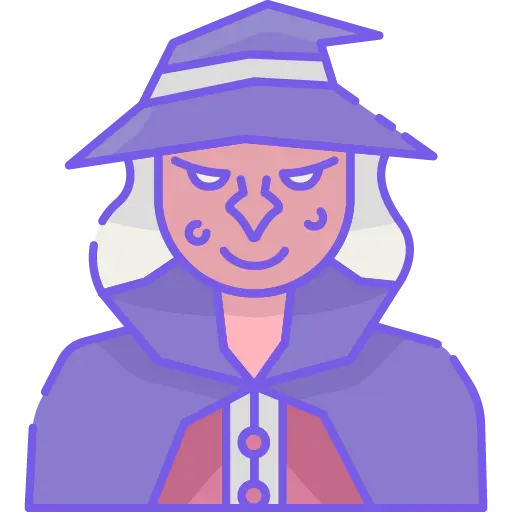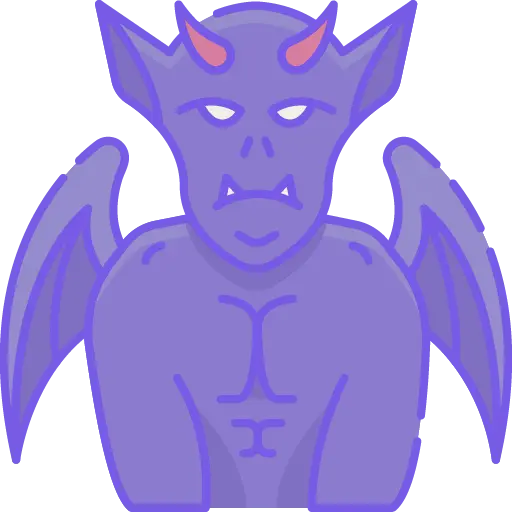
Dungeons & Dragons 5e
Originally created by Wizards of the Coast
Dungeons & Dragons 5e is the most popular tabletop role-playing game on the market. With its simplified rules, diverse settings, and player-driven customizability, it’s easy to see why! Perhaps you’ve dreamed of slinging arrows like Legolas, crushing enemies like Conan, or attacking angry chickens like Link—you can make that a reality in D&D 5e! There are three main aspects to a game of D&D: combat, exploration, and roleplay. Different games will feature different balances of these depending on how the people like to play but it’s up to you and your Dungeon Master (DM) to craft a world that you love! Whether it’s the Forgotten Realms, Critical Role’s Wildemount/Exandria, your own steampunk-themed world where wizards ride dinosaurs, or anything in between—your imagination truly is the limit!
Details
Themes
Publisher
Release Date
Dungeons & Dragons 5e Reviews (156)
See what other Game Masters and players are saying about Dungeons & Dragons 5e
I got into D&D through podcasts that were playing 5e, and now I'm playing a bi-weekly game right here on StartPlaying. The knowledge I gained from the podcasts easily applies to actually playing the game, which I was worried about, but this tells me that it is an easy to learn game with lots of creative options.
D&D is the definitely the best known TTRPG, to the point that it is almost ubiquitous with TTPRGs as a whole. There are a lot of rules and mechanics available to give structure to anything you might want, while being flexible enough to not have to use any of it. Because it is so big, there are plenty of resources, communities, and books available for D&D. It is a great place to start to get familiar with the hobby, even if it can be a steep learning curve at first.
I haven't been terribly impressed with WotC & Hasbro. This new stuff feels like the people who are working on the product are trying to change things for the better without the fundamental understanding of what makes the game fun in the first place. The people making changes to the game give the impression that all they are interested in is making their mark here before moving off to something else that they consider to be more prestigious
How to play D&D 5e
The core mechanic of Dungeons and Dragons is rolling a 20-sided die, adding bonuses and modifiers from your character’s abilities, and trying to beat a target number. Players build their characters by choosing a fantastical species, class, abilities, skills, equipment, and magic spells, then embark on adventures to advance their wealth and power. D&D also has a robust tactical combat system for fighting monsters and other adversaries, plus rules for delving dungeons and exploring the wilderness.
Dungeons & Dragons 5e map makers
Cze and Peku
Cze and Peku are well-known in the TTRPG community for their vibrant and highly detailed battle maps. They specialize in fantasy, sci-fi, and modern settings, offering maps for everything from dungeons to sprawling cities. Their Patreon provides a variety of map styles, along with grid and gridless options, making them perfect for both virtual tabletops and print. With frequent updates, they’re a go-to for immersive game experiences.
Explore MapsTom Cartos
Tom Cartos is a renowned creator of highly detailed, multi-level battlemaps for tabletop role-playing games (TTRPGs) like Dungeons & Dragons. His work enhances gameplay by providing immersive environments that captivate players. Tom offers a diverse range of maps, including fantasy and modern settings, available through his website and Patreon. Patreon supporters gain access to weekly map sets, asset packs, and monthly adventures, with higher tiers offering additional benefits such as DungeonDraft integration and limited commercial licensing.
Explore MapsVenatus Maps
Venatus Maps specializes in creating clean, modular battle maps for virtual tabletops. Their work covers a wide range of environments, from haunted forests to ancient ruins, with meticulous attention to detail. Venatus Maps also offers map packs designed for specific adventures, making it easier to plug them into existing campaigns.
Explore MapsHeroic Maps
Heroic Maps delivers high-quality, printable battlemaps that cater to both fantasy and sci-fi settings. Known for their versatility, Heroic Maps provide a mix of atmospheric dungeons, vivid landscapes, and detailed interiors. Their offerings include modular designs that can be pieced together for expansive settings, perfect for GMs looking for flexibility in map design.
Explore MapsDungeons & Dragons 5e community artists
Tyler Jacobson
Tyler Jacobson is a renowned fantasy artist whose work has graced the covers of several D&D 5th Edition books, including the 2024 Player's Handbook. His dynamic and detailed illustrations capture the essence of D&D's expansive universe.
Explore ArtWylie Beckert
Wylie Beckert is known for her intricate and atmospheric artwork. She contributed the alternate cover art for the 2024 Player's Handbook, showcasing her unique style that adds depth and intrigue to the D&D world.
Explore ArtEkaterina Burmak
Ekaterina Burmak is a Ukrainian artist celebrated for her vibrant and detailed illustrations. She provided the cover art for "Light of Xaryxis," a component of the "Spelljammer: Adventures in Space" boxed set, bringing the cosmic adventures of D&D to vivid life.
Explore ArtJustin Gerard
Justin Gerard is a fantasy illustrator whose work has been featured in various D&D publications. He created the cover art for "Boo's Astral Menagerie," another part of the "Spelljammer: Adventures in Space" set, capturing the essence of D&D's diverse creatures.
Explore ArtFrequently asked questions about Dungeons & Dragons 5e
Explore Dungeons & Dragons 5e Classes

Artificer
Why wait for magic items when you can build your own? The Artificer makes use of tools and science to make magic. This gives you a grab bag of abilities from healing to damage dealing to quickly making a necessary tool. Artificers can enchant normal items to take on magical properties, outfitting their team with powered-up gear or giving themselves a fantasy Iron Man suit.

Barbarian
This one’s for those who love to play the undying tank in video games. Barbarians use their rage to perform great feats of strength and halve incoming damage. You can also channel the protection of the world tree, bond with animals, or just kick butt like Grog from Vox Machina. It’s a simple but rewarding playstyle, one that’s perfect for new players who don’t want to get into the complexities of magic.

Bard
Your inner theatre kid probably brought you to the Bard. This class uses a variety of performance styles to cast spells and inspire other characters. Let your imagination run wild as you unleash your power through dance, song, spirit calling, or sword dancing, to name a few. You’ll be charming enough to talk your way out of a fight, but tricky enough to hinder opponents once the fists start flying.

Cleric
MMO players might see Cleric and think dedicated healer, but that’s not the case. While a Cleric can harness powerful healing magic, their full suite of abilities depend on their god. As such, they can wield damaging radiance, craft illusions bestowed by trickster gods, or become the hammer of a war deity. Clerics end up with a nice balance of damage, utility, and sturdiness.

Druid
When you gotta have an animal companion (or twenty) in every game, Druid is for you. Druids draw upon nature’s fury to heal allies, bind enemies, and transform into animals themselves. You can also summon a pet or many deadly pets at higher levels. Become a feral freedom fighter by playing a Druid.

Fighter
If your power fantasy is being the big guy with a big sword, look no further than Fighter. This classic DnD class gives you all the weapons and straightforward rules for using them. Just hit the bad guys a lot. If you want to get tactical, some Fighters can use fancy maneuvers or magic. Whether you want to be swift like Legolas, strong like Guts from Berserk, or versatile like Link from Legend of Zelda, Fighter’s got you covered.

Monk
The martial arts fantasy is alive and well in the Monk. While Fighters often rely on heavy armor and lots of weapons, the Monk is meant to move swiftly and strike with many blows. DnD Monks wield an inner power that’s not quite magic but still lets you perform all sorts of gravity-defying maneuvers. As more abilities unlock, you can become a shadowy assassin, heal with your hands, or wield all four elements like the Avatar.

Paladin
The image of a knight in shining armor is iconic to medieval fantasy, and the Paladin delivers with magical flair. They wear armor like the Fighter and can heal like the Cleric, but pack an extra punch with their signature smite. This attack lights your weapon up with divine power and lets you roll extra dice which always feels nice. You can design your Paladin as a holy warrior of justice, guardian of nature, or tortured warrior of vengeance.

Ranger
Become a lone warrior of the wilds, a wandering blade that protects the fringes of society from evil. The Ranger commands nature magic with pure survival skill to guide the party on long journeys. In battle, they wield weapons with precision to hunt down targets. With level ups, you can boost your Ranger’s abilities with fey powers, shadow magic, or give them a beast companion.

Rogue
A good stealth character can tear enemies apart from the shadows or discover secrets that stop the battle before it even begins. The Rogue is where you go to get that fantasy. You can choose from a variety of skills to customize your Rogue, such as poisoning your blades to become an assassin, learning magic for illusions, or just being a crafty thief.

Sorcerer
The Sorcerer class leans into the glass cannon build popular in video games. Their health is on the lower side and they don’t wear armor, but they cast some of the most powerful spells in the game. Sorcerers also have magical mutations that let you empower your spells beyond those of other spellcasters. You also get to choose the source of your magic, be it eldritch mystery, pure chaos, or the blood of dragons.

Warlock
If you like your magic creepy and mysterious, check out the Warlock. These characters get magic from a patron, which can range from a demonic pact to an unknowable elder god. This unique approach to magic grants warlocks a few spells that they specialize greatly in. When a Warlock takes their turn in combat, everyone notices. Warlocks are also fantastic for roleplay as they have a built-in storyline with their patron.

Wizard
The original spellcaster, and the one who gets all the spells. Wizards don’t get divine help or a mysterious patron, so they have to learn magic the old-fashioned way: by reading. This allows Wizards to gain more spells than any other class as long as they can find books. Wizards can come to the rescue in almost any situation, as their magic can save allies, fool enemies, boost physical abilities, learn secrets, and blow things up.
Virtual table tops for Dungeons & Dragons 5e (VTTs)

Learn to Play D&D online
The essentials for playing D&D online

Everything You Need to Play D&D Online
The tools you need to Start Playing!

Dungeons & Dragons Essentials
What Do You Need to Start Playing D&D?







